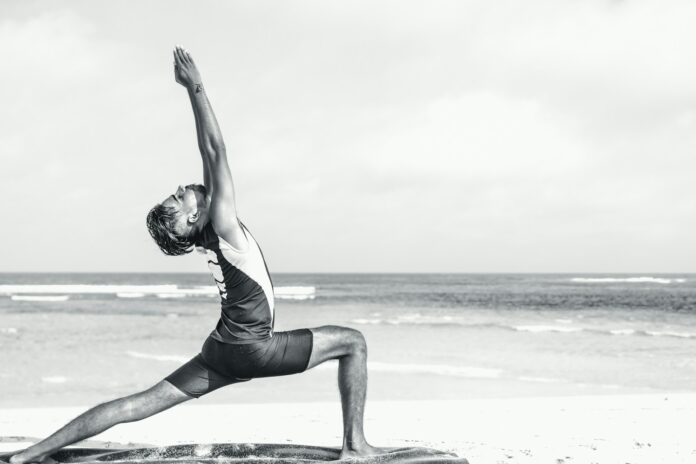Yoga is often associated with flexibility and relaxation, but it’s also a powerful tool for building core strength and enhancing stability. A strong core is essential for balance, posture, and injury prevention, and yoga provides a holistic, low-impact approach to develop these muscles. By engaging deep stabilizing muscles and promoting body awareness, yoga strengthens the core from the inside out.
Why Core Strength Matters
The core isn’t just about visible abs. It includes the abdominals, obliques, lower back, hips, and pelvic muscles – all of which work together to support the spine and maintain balance. A strong core:
- Improves Posture
- Reduces Lower Back Pain
- Enhances Athletic Performance
- Prevents Injuries
“Your core is the foundation of movement – and yoga strengthens it with precision and control.”
How Yoga Targets the Core
1. Activates Deep Muscles
Yoga engages the transverse abdominis (deepest layer of the abdominal muscles), which is critical for stability and spinal support. Unlike crunches that target superficial muscles, yoga strengthens the deep core, enhancing long-term stability.
2. Balances Muscle Engagement
Yoga poses require balance, coordination, and controlled breathing, ensuring the entire core engages symmetrically. This prevents muscle imbalances that lead to poor posture or injury.
3. Incorporates Isometric Holds
Many yoga postures involve holding positions for extended periods, which creates sustained core engagement and promotes endurance.
4. Focuses on Alignment and Breathwork
Breathing techniques (pranayama) combined with movement improve core engagement by activating the diaphragm and pelvic floor muscles.
Key Yoga Poses to Strengthen the Core
1. Plank Pose (Phalakasana)
- Muscles Targeted: Abdominals, shoulders, lower back.
- Why It Works: Full-body engagement, emphasizing core stabilization.
👉 Progression: Lift one leg or transition into side plank for added intensity.
2. Boat Pose (Navasana)
- Muscles Targeted: Rectus abdominis, hip flexors.
- Why It Works: Requires core strength to hold balance and maintain alignment.
👉 Modification: Bend knees to reduce intensity or extend legs fully to increase difficulty.
3. Warrior III (Virabhadrasana III)
- Muscles Targeted: Glutes, hamstrings, lower back, core.
- Why It Works: Balancing on one leg enhances core stability and strengthens the posterior chain.
👉 Focus on engaging the core and keeping the hips square.
4. Dolphin Plank
- Muscles Targeted: Core, shoulders, and upper back.
- Why It Works: This variation of plank deepens core activation by shifting weight forward.
5. Revolved Triangle (Parivrtta Trikonasana)
- Muscles Targeted: Obliques and spinal stabilizers.
- Why It Works: Twisting engages the oblique muscles, enhancing rotational strength.
👉 Support core recovery with Myprotein’s post-yoga supplements at Myprotein.
Benefits of Core-Focused Yoga
1. Injury Prevention
A strong core protects the lower back and reduces strain during daily movements and sports. Yoga’s focus on spinal alignment and posture lowers the risk of overuse injuries.
2. Enhanced Athletic Performance
Athletes rely on core strength for speed, power, and balance. Yoga improves functional core strength that translates to better performance in running, cycling, and weightlifting.
3. Improved Balance and Stability
Balancing poses in yoga strengthen small stabilizer muscles around the spine and hips, reducing falls and enhancing coordination.
4. Better Posture
Poor posture often results from weak core muscles. Yoga strengthens these muscles, promoting proper spinal alignment and reducing slouching.
5. Stress Reduction and Recovery
Yoga’s mindful movement and deep breathing activate the parasympathetic nervous system, promoting recovery and reducing cortisol levels (stress hormone). A calm, stress-free body recovers faster, allowing muscles to grow stronger.
Sample Core Yoga Flow (20 Minutes)
| Pose | Hold Time | Reps |
|---|---|---|
| Plank Pose | 45 sec | 2 rounds |
| Boat Pose | 30 sec | 3 rounds |
| Warrior III | 30 sec/leg | 2 rounds |
| Dolphin Plank | 45 sec | 2 rounds |
| Side Plank (Each Side) | 30 sec | 2 rounds |
| Child’s Pose (Cool Down) | 1 min | 1 round |
👉 Fuel post-session with Myprotein’s protein shakes and recovery formulas at Myprotein.
Tips to Maximize Core Engagement in Yoga
- Draw the Navel Inward – Focus on pulling the belly button toward the spine during each pose.
- Control the Breath – Engage the core with each inhale and exhale to deepen the stretch and muscle activation.
- Maintain Alignment – Keep the spine neutral and avoid arching the lower back.
- Progress Gradually – Start with modified versions of poses and increase intensity over time.
Combining Yoga with Other Core Workouts
Pairing yoga with strength training, Pilates, or functional movements enhances overall core strength.
- Strength Training: Focus on planks, deadlifts, and cable rotations.
- Pilates: Complement yoga with core-centric Pilates classes.
- HIIT: Incorporate dynamic core exercises like mountain climbers and burpees.
News Box: Yoga and Core Strength Insights
Stay updated on the latest fitness and yoga trends at News Box. Discover how top athletes incorporate yoga to boost core stability and performance.
Conclusion: Yoga as a Core Powerhouse
Yoga offers more than flexibility – it builds a strong, stable core that enhances athletic performance, prevents injuries, and supports overall health. By engaging in core-focused yoga routines regularly, you’ll improve balance, posture, and functional strength.
“A strong core is the key to total-body strength – and yoga is the path to unlock it.”
👉 Boost recovery and muscle growth with Myprotein supplements at Myprotein.

